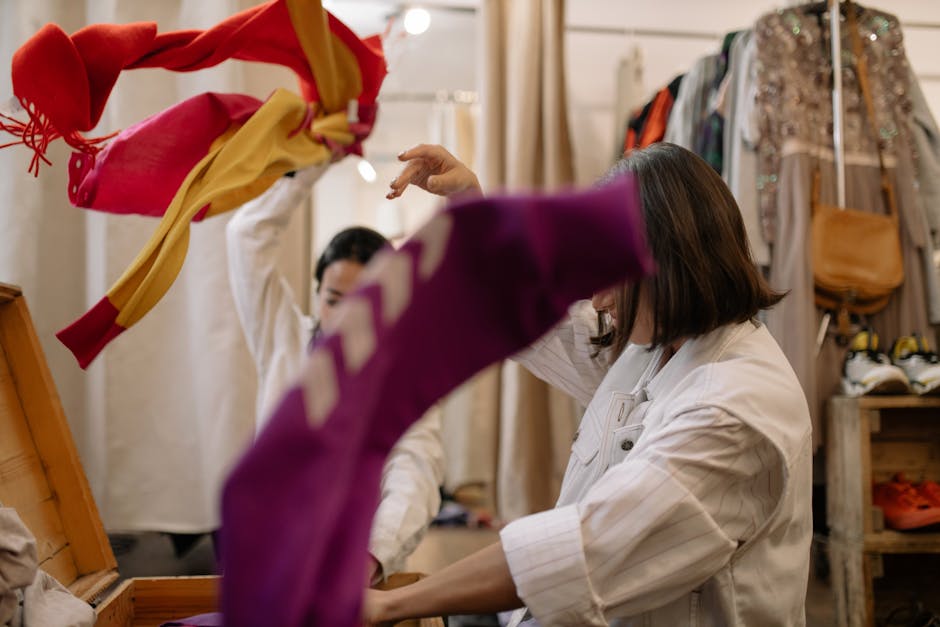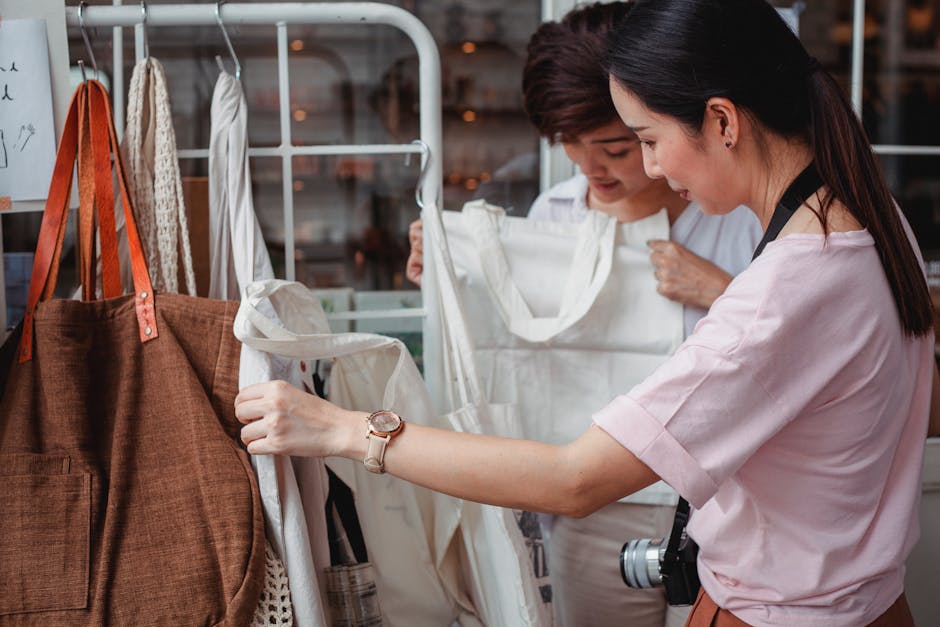Fashion Sustainability Strategies: A Comprehensive Guide
Welcome to the world of fashion sustainability strategies, where style meets sustainability in a harmonious blend of creativity and eco-consciousness. In today’s fast-paced and ever-evolving fashion industry, the concept of sustainability has taken center stage, prompting brands and consumers alike to rethink their practices and choices. From reducing waste and carbon footprint to promoting ethical labor practices and using eco-friendly materials, fashion sustainability strategies encompass a wide range of initiatives aimed at making the industry more environmentally and socially responsible.
But what exactly are fashion sustainability strategies, and why are they so crucial in today’s context? In this comprehensive guide, we will delve deep into the world of sustainable fashion, exploring the various strategies, trends, challenges, and opportunities that define this rapidly growing sector. Join us on this journey as we uncover the key principles and practices that are shaping the future of fashion.
The Rise of Fashion Sustainability

In recent years, the fashion industry has come under increasing scrutiny for its environmental and social impact. From the use of harmful chemicals in production to the exploitation of garment workers in developing countries, the dark side of the fashion industry has been exposed, prompting calls for change and accountability. In response to these challenges, a growing number of brands and designers have embraced sustainability as a core value, integrating eco-friendly practices into their business models and product offerings.
One of the driving forces behind the rise of fashion sustainability is the growing awareness among consumers about the environmental and social implications of their purchasing decisions. As more people become conscious of the impact of fast fashion on the planet and its people, there has been a significant shift towards more sustainable and ethical alternatives. This shift has not only influenced consumer behavior but has also pushed fashion brands to reevaluate their practices and adopt more sustainable approaches.
But what exactly are fashion sustainability strategies, and how do they differ from traditional fashion practices? Let’s take a closer look at some of the key strategies that are shaping the future of sustainable fashion.
1. Sustainable Materials

One of the fundamental pillars of fashion sustainability is the use of sustainable materials. Traditional fashion production relies heavily on materials such as cotton, polyester, and leather, which have a significant environmental impact due to their high water and chemical use. In contrast, sustainable materials are sourced from renewable and eco-friendly sources, with minimal impact on the environment.
Examples of sustainable materials include organic cotton, hemp, bamboo, and Tencel, which are produced using environmentally friendly farming and manufacturing practices. These materials are not only better for the planet but also often have superior qualities in terms of comfort, durability, and biodegradability. By incorporating sustainable materials into their collections, fashion brands can reduce their carbon footprint and promote a more circular economy.
2. Ethical Production

Another key aspect of fashion sustainability is ethical production practices. The fashion industry has long been criticized for its reliance on cheap labor and unsafe working conditions in garment factories, particularly in developing countries. Ethical production aims to ensure that workers are treated fairly, paid a living wage, and work in safe and healthy environments.
Many sustainable fashion brands have taken steps to improve the transparency and traceability of their supply chains, ensuring that their products are made under ethical conditions. This includes partnering with certified ethical factories, conducting regular audits, and engaging with workers’ rights organizations to uphold labor standards. By prioritizing ethical production, brands can build trust with consumers and contribute to a more equitable and sustainable fashion industry.
3. Circular Fashion

Circular fashion is a concept that aims to eliminate waste and promote the reuse and recycling of clothing and textiles. In a traditional linear fashion model, clothing is produced, consumed, and disposed of in a linear fashion, leading to massive amounts of waste and pollution. Circular fashion, on the other hand, seeks to create a closed-loop system where clothing is designed to be reused, repaired, and recycled at the end of its life.
There are several strategies that brands can adopt to embrace circular fashion, such as designing for longevity, offering repair and alteration services, and implementing take-back programs for old garments. By extending the lifespan of clothing and keeping materials in circulation, brands can reduce the environmental impact of fashion production and contribute to a more sustainable future.
4. Slow Fashion
Slow fashion is a movement that advocates for a more mindful and conscious approach to fashion consumption. In contrast to the fast fashion model, which promotes rapid production and consumption of cheap, disposable clothing, slow fashion encourages consumers to buy fewer, higher quality pieces that are ethically and sustainably made. The goal of slow fashion is to reduce overconsumption, minimize waste, and foster a deeper appreciation for craftsmanship and design.
By embracing slow fashion principles, consumers can build a more sustainable and environmentally friendly wardrobe that reflects their personal style and values. This can include investing in timeless pieces, supporting local and independent designers, and participating in clothing swaps and second-hand markets. Slow fashion is not just a trend but a lifestyle choice that promotes sustainability and self-expression.
5. Digital Innovation
In today’s digital age, technology plays a crucial role in driving innovation and sustainability in the fashion industry. Digital tools and platforms have revolutionized the way brands design, produce, and market their products, offering new opportunities to reduce waste, improve efficiency, and engage with consumers. From 3D design software to virtual fashion shows, digital innovation is reshaping the future of fashion sustainability.
Some of the key digital innovations that are transforming the fashion industry include on-demand manufacturing, virtual fitting rooms, and blockchain technology for supply chain transparency. These tools enable brands to produce clothing on a made-to-order basis, reduce excess inventory, and track the journey of a garment from raw materials to finished product. By leveraging digital innovation, brands can streamline their operations, reduce their environmental impact, and meet the growing demand for sustainable fashion.
6. Collaborative Partnerships
Collaborative partnerships are another essential component of fashion sustainability strategies, as they allow brands to leverage the expertise and resources of other organizations to drive positive change. By working together with suppliers, NGOs, industry associations, and government agencies, fashion brands can address complex sustainability challenges more effectively and create lasting impact.
One example of a successful collaborative partnership is the Better Cotton Initiative (BCI), a global nonprofit organization that works with cotton farmers, manufacturers, and retailers to promote more sustainable cotton production. By joining forces with BCI, brands can source responsibly grown cotton, support farmer livelihoods, and reduce the environmental impact of cotton farming. Collaborative partnerships like these are essential for driving systemic change and building a more sustainable fashion industry.
7. Consumer Education
Consumer education is a key aspect of fashion sustainability strategies, as it empowers individuals to make informed choices about the clothes they buy and wear. By raising awareness about the environmental and social impact of fashion, brands can help consumers understand the significance of their purchasing decisions and encourage them to support sustainable alternatives.
Many brands are investing in consumer education initiatives such as sustainability guides, workshops, and online resources to help consumers make more sustainable choices. By providing transparent information about their products, including details about materials, production processes, and certifications, brands can build trust with consumers and create a more conscious shopping experience. Education is a powerful tool for driving change and fostering a culture of sustainability within the fashion industry.
Common Misconceptions
One common misconception about fashion sustainability is that it is only for high-end and luxury brands. In reality, sustainability is a universal concept that can be applied at all price points and market segments. Whether you’re a fast fashion retailer or a high-end designer, there are numerous ways to incorporate sustainable practices into your business model and product offerings.
Another misconception is that sustainable fashion is expensive and inaccessible. While it’s true that some sustainable brands may have higher price points due to the use of premium materials and ethical production practices, there are also affordable and accessible options available. From thrift stores and second-hand markets to sustainable fashion labels with affordable price points, there are plenty of ways to shop sustainably on a budget.
Conclusion
To wrap things up, fashion sustainability strategies are essential for creating a more equitable, ethical, and environmentally friendly fashion industry. By embracing sustainable materials, ethical production practices, circular fashion, slow fashion, digital innovation, collaborative partnerships, and consumer education, brands can make a positive impact on the planet and its people. The future of fashion lies in sustainability, and it’s up to all of us to drive positive change and shape a more sustainable and stylish world.
As we continue to explore the possibilities of fashion sustainability, let’s remember that every choice we make has the power to create a more sustainable future for generations to come. Whether it’s supporting eco-friendly brands, choosing timeless pieces over trendy fads, or participating in clothing swaps and repair workshops, we all have a role to play in shaping a more sustainable and stylish world. Together, we can make fashion a force for good and a source of inspiration for positive change.




